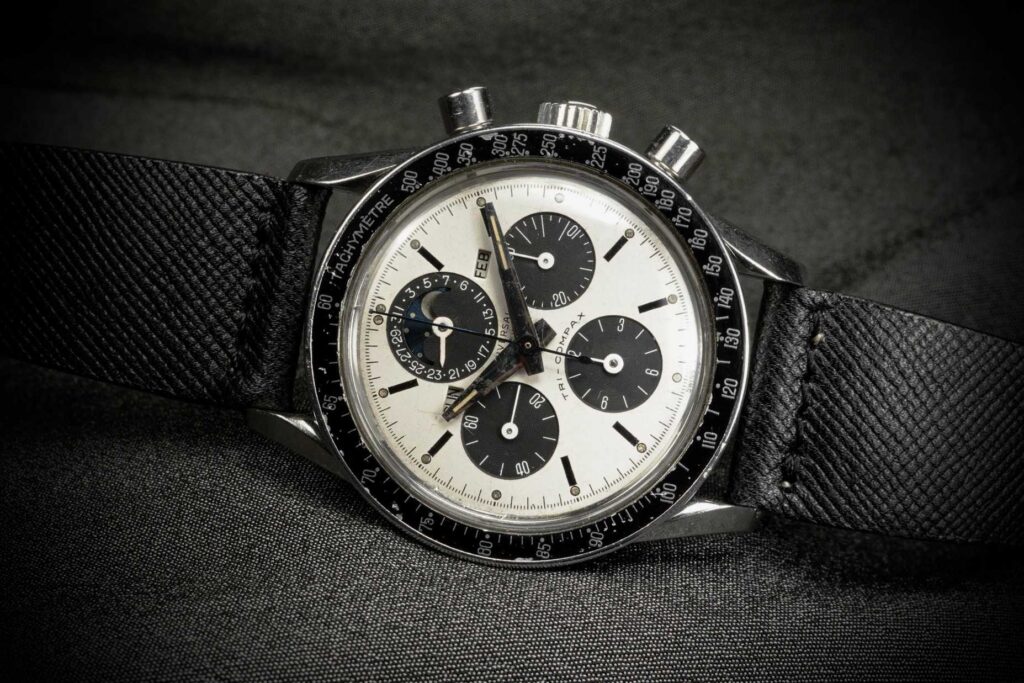Universal Genève and 3 Celebrities Who Wore Them

Long before hype-driven wristwear dominated social media feeds, Universal Genève quietly graced the wrists of world leaders, movie stars, and motorsport legends. Known for their refined design and mechanical innovation, Universal Genève watches weren’t just tools — they were statements of taste, intellect, and, often, quiet rebellion. For collectors today, tracing these cultural connections adds another layer to the appeal of owning a vintage Universal Genève. Here’s a closer look at some of the brand’s most notable celebrity connections — and why they still matter.

Harry S. Truman – Tri-Compax
The 33rd President of the United States, Harry Truman, was known to wear a Universal Genève Tri-Compax — its a Ref. 12551 serial number 1045758, a solid gold triple-calendar chronograph with moonphase. It’s a watch that reflected Truman’s era: complex but orderly, restrained yet powerful. This Universal Genève – as indicated by the caseback engraved presentation, was worn in July 1945 at the Potsdam conference;
The Potsdam Conference, held from July 17 to August 2, 1945, was the last major meeting between the Allied leaders during World War II.
It took place in Potsdam, Germany, and was attended by U.S. President Harry S. Truman, British Prime Ministers Winston Churchill and later Clement Attlee, and Soviet Premier Joseph Stalin. The conference was a key political event which defined part of the western world`s post-war order and addressed how to administer defeated Nazi Germany.
Key outcomes included the demilitarization, denazification, democratization, and division of Germany into occupation zones. The leaders also issued the Potsdam Declaration, demanding Japan’s unconditional surrender —warning of “prompt and utter destruction” otherwise. Tensions between the Soviet Union and the Western Allies also began to surface more clearly at Potsdam, foreshadowing the Cold War.
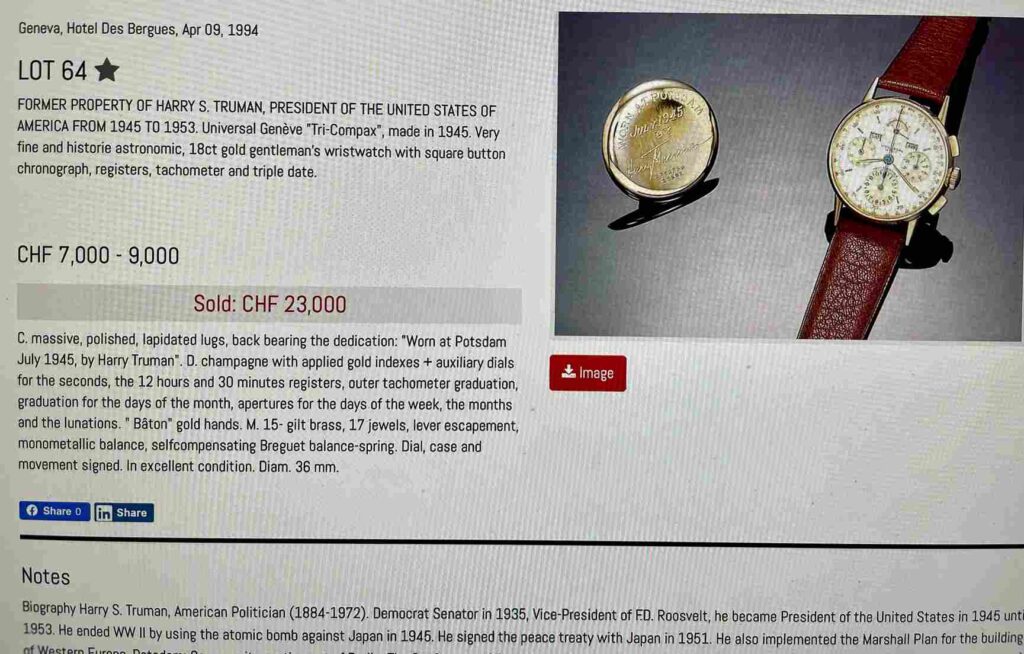
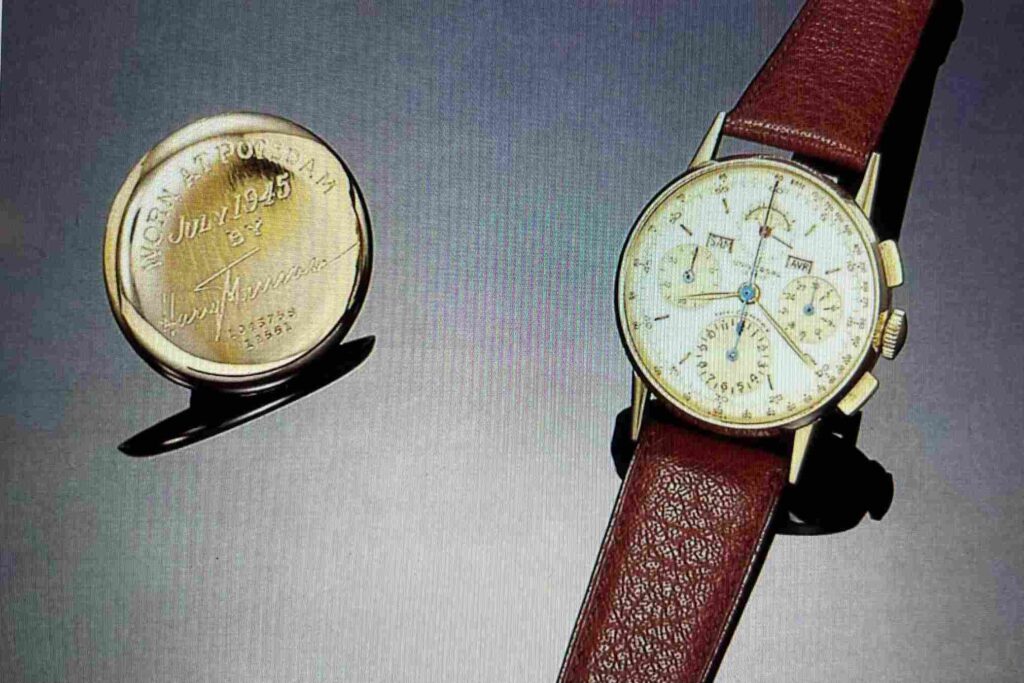
This particular watch was offered at auction by Antiquorum, the renowned Swiss auction house specializing in fine timepieces. It appeared in Lot 64, at the Geneva Auction on Apr. 9Th , 1994 at the Hotel des Bergues, as listed in their official catalog. here is the listing: C. massive, polished, lapidated lugs, back bearing the dedication: “Worn at Potsdam July 1945, by Harry Truman”.
D. champagne with applied gold indexes + auxiliary dials for the seconds, the 12 hours and 30 minutes registers, outer tachometer graduation, graduation for the days of the month, apertures for the days of the week, the months and the lunations. ” Bâton” gold hands. M. 15- gilt brass, 17 jewels, lever escapement, monometallic balance, selfcompensating Breguet balance-spring. Dial, case and movement signed. In excellent condition. Diam. 36 mm. CI.
The auction started at 7000 Swiss Francs but ended at 23.000
Nina Rindt – A Style Icon with a Compax
Nina Rindt was a celebrated Finnish fashion model and wife of 1960s Formula 1 legend JochenRindt.
Often spotted in the pit lanes during Grand Prix weekends, she is often seen in vintage photographs sporting a Universal Genève Compax chronograph worn loosely on a leather bund strap, its “panda” dial (white face with black subdials) became indelibly associated with her.

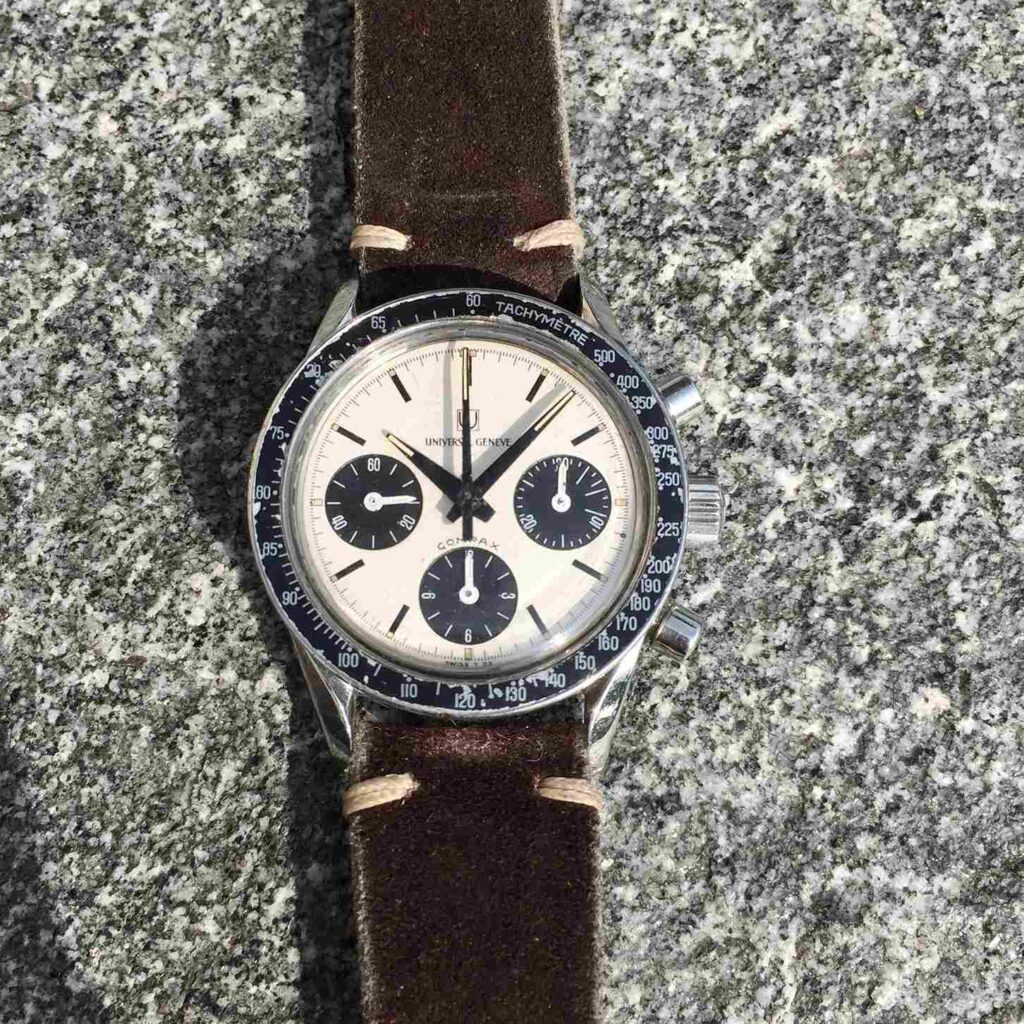
The look became iconic: a fusion of utilitarian timing and 1960s chic.
Today, that image is often referenced by collectors looking to capture that effortless cool.
Launched between 1964–67 (reference 885103/02), the watch earned the affectionate nickname “Nina Rindt” among collectors.
Powered by the robust Valjoux 72 movement, its clean steel case with polished twisted “lyre” lugs and applied UG logo exudes 1960s elegance.
Today, it’s a supremely sought-after vintage chronograph—praised not only for its mechanics but for its genuine racing pedigree and timeless style.
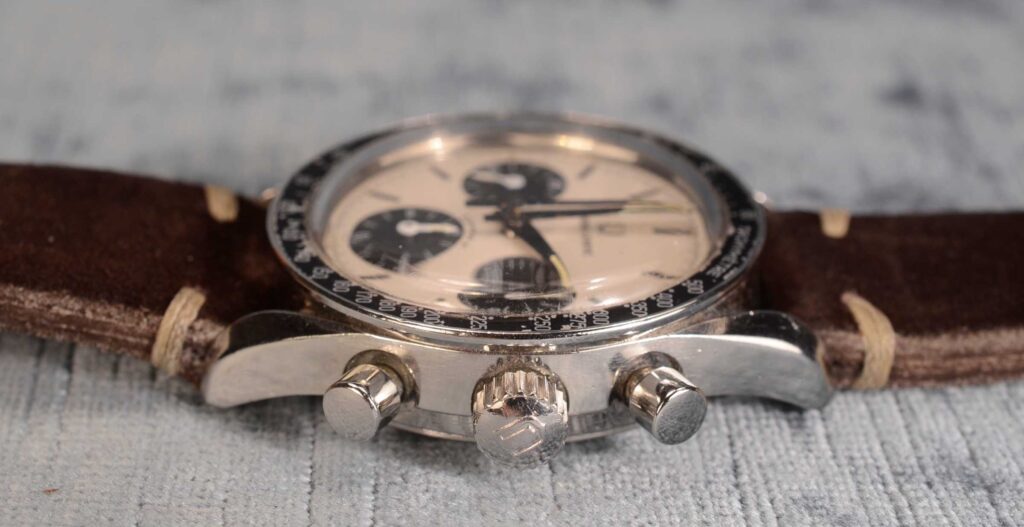
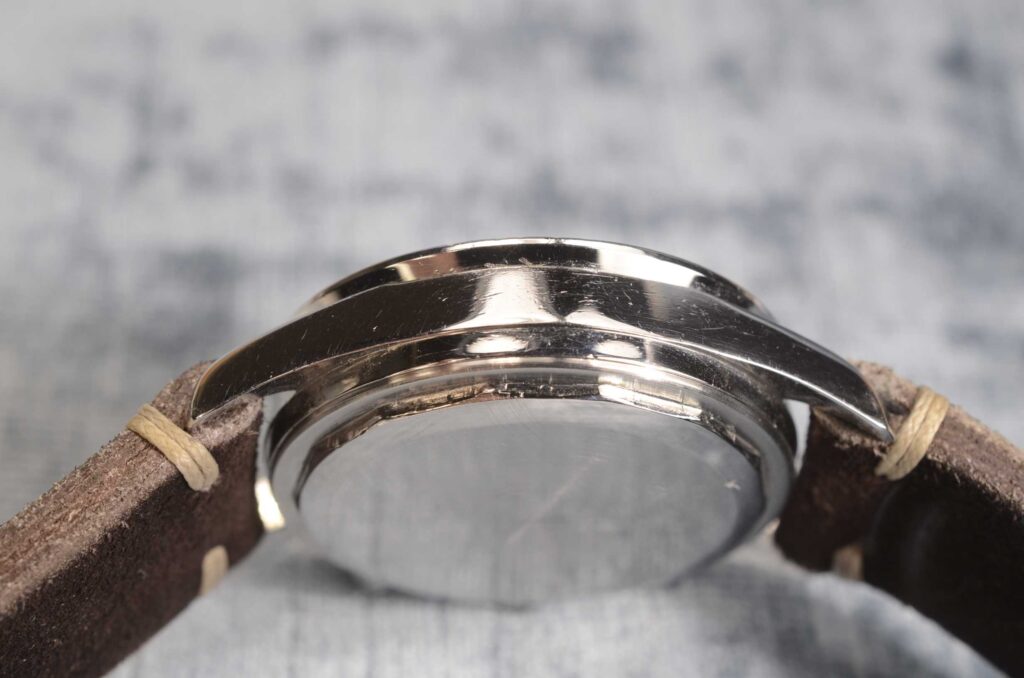
The Universal Genève Compax “Nina Rindt” shares striking aesthetic and technical similarities with the Rolex Daytona Ref. 6263, making it a compelling alternative for vintage chronograph enthusiasts.
Both watches has a similar panda dial layout and a black tachymeter bezel, lending them a bold, motorsport-inspired look.
However, key differences highlight each brand’s design philosophy: the “Nina” sports twisted lyre lugs, typical of Universal Genève’s elegant case architecture, while the Daytona’s straight lugs emphasize a more utilitarian profile.
Both models are powered by the Valjoux 72 movement—a manual-winding chronograph caliber revered for its robustness and precision.
In the Daytona, the movement was extensively modified by Rolex, whereas Universal Genève used a more standard configuration. Additionally, the Nina Rindt Compax has simple round pushers, offering a sleeker profile, while the Daytona’s screw-down pushers enhance water resistance and underline its tool-watch character.
These parallels and contrasts place the “Nina Rindt” in the same conversation as the Daytona 6263—not as a substitute, but as an equally charismatic chronograph with its own cult following.
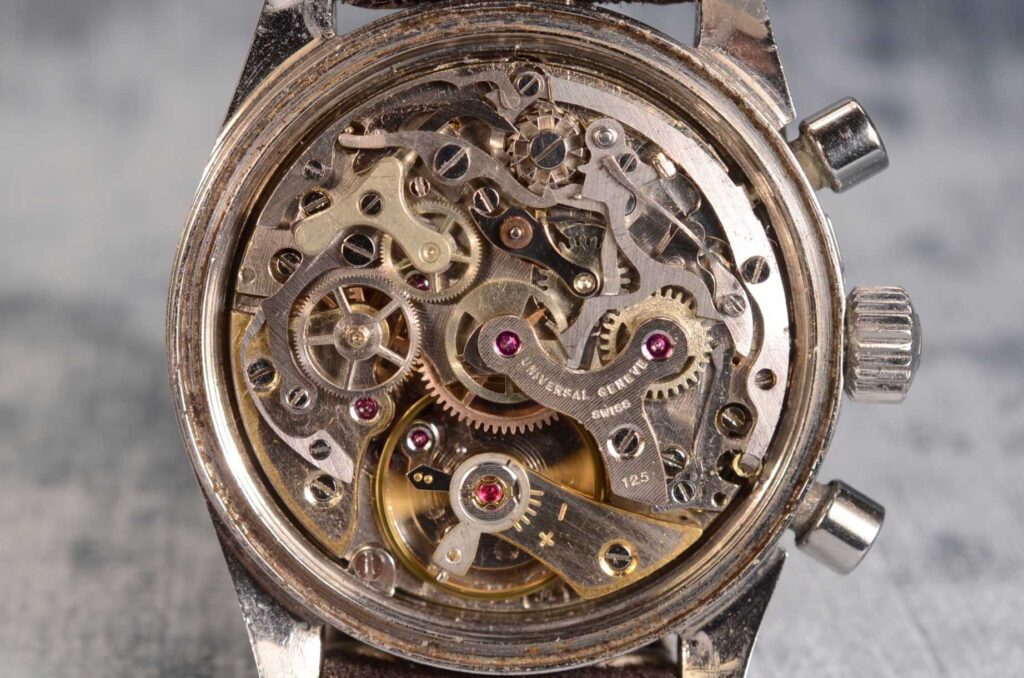
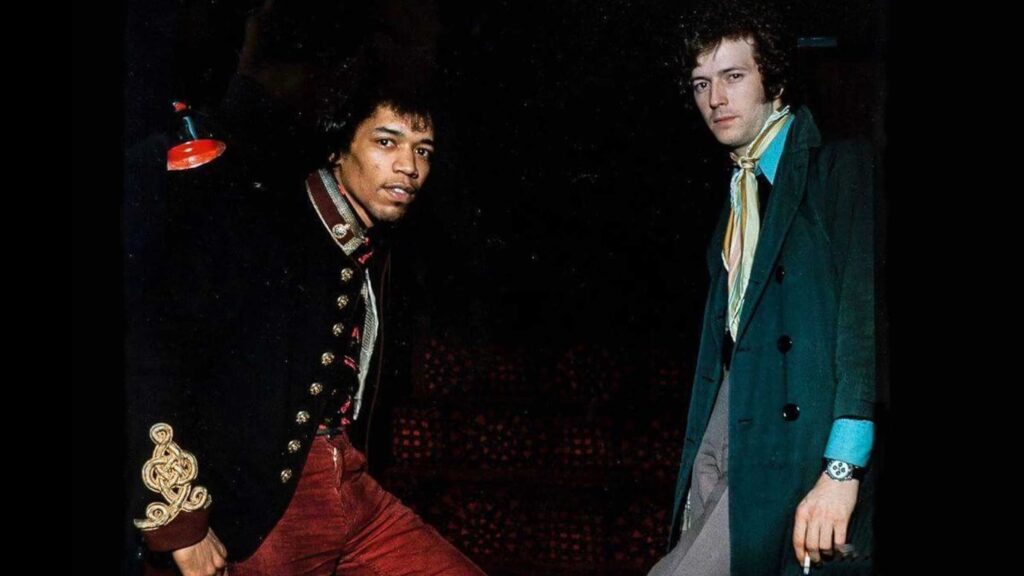
Eric Clapton – Quiet Luxury
Eric Clapton, legendary guitarist and cultural icon, is also renowned for his discerning eye as a watch collector.
While much of the spotlight has focused on his rare Patek Philippe and Rolex timepieces, Clapton has also shown appreciation for Universal Genève, The photo was taken on March 16, 1967, at the launch party for Track Records, the label founded in 1966 by Kit Lambert and Chris Stamp, managers of The Who. On Eric Clapton’s wrist that evening was a brand-new Universal Genève Tri-Compax Ref. 881101 — a watch introduced that same year.
This chronograph shares the same style code as the “Nina Rindt,” but is powered by a more complex, manufacture-grade movement. Ref. 881101 was infact powered by the in-house Caliber 281, originally developed by Martel for Universal Geneve in the 1940s.
This movement is more modern variation integrating a triple calendar complication module with a moonphase, combined with a traditional three-register chronograph layout.
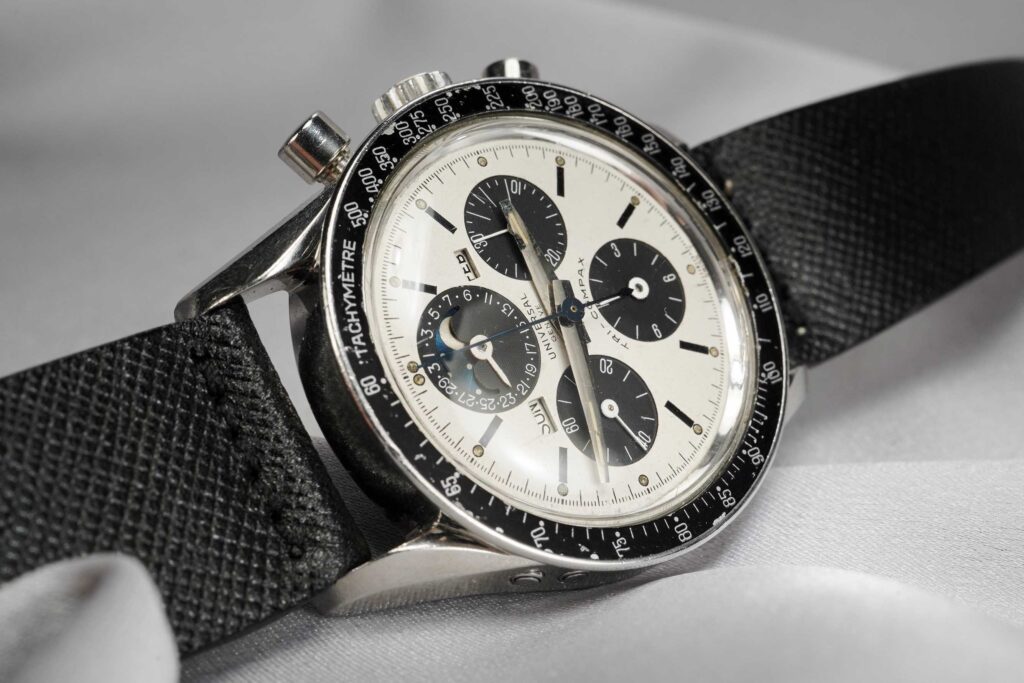
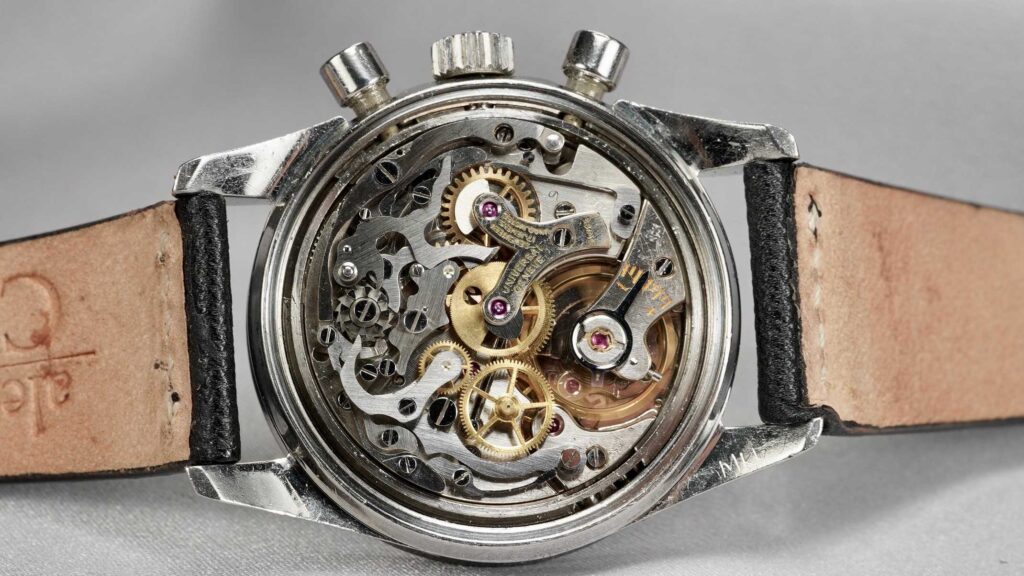
The result is a visually dense, yet elegantly organized dial: twin apertures for the day and month, a moonphase and date register at 12 o’clock, and sub-dials at 3, 6, and 9.
Beyond its mechanical significance, the 881101 gained popularity among collectors for its distinctive design cues: a panda dial with red accents, a black tachymeter bezel, and a twisted-lug case— all contributing to its sporty yet refined aesthetic.
Despite the complexity of the display, it wears like a true 1960s tool watch, blending function with bold style.
